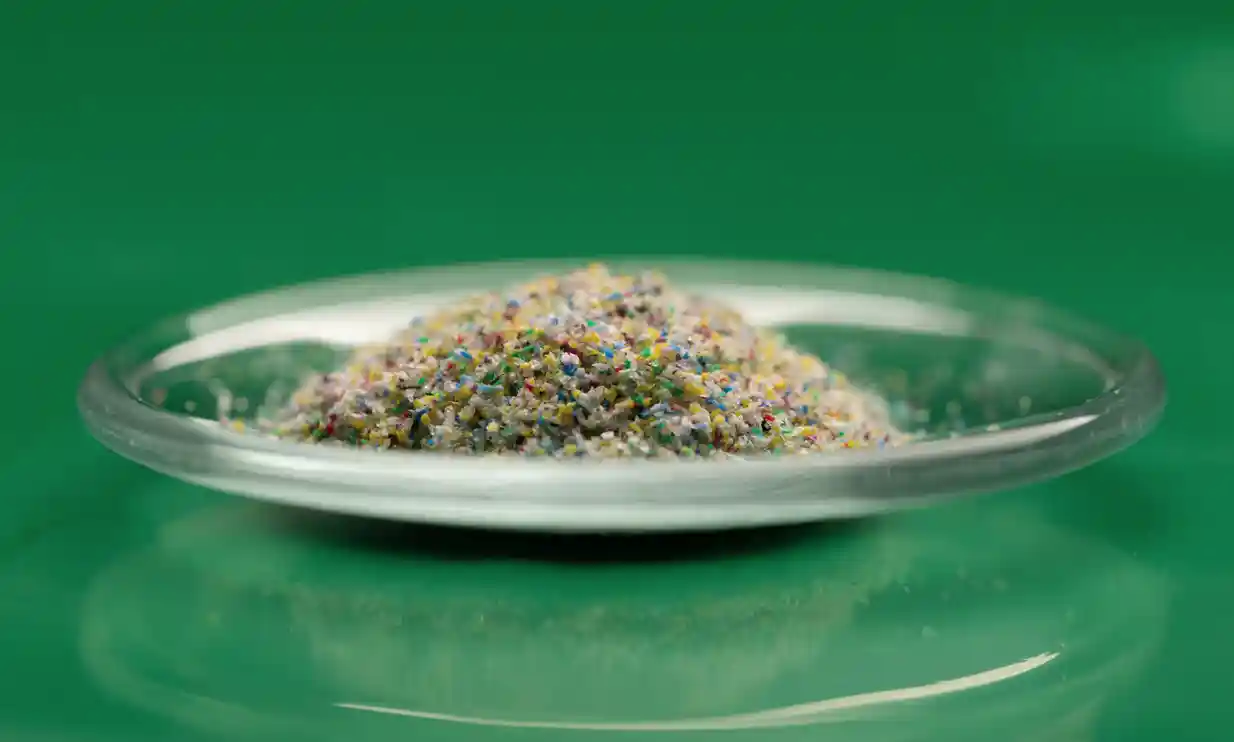Plastic in our Body

We live in a world surrounded by plastics, from water bottles to shopping bags, to clothes we wear every day. However, plastics are also in the air and even in our bloodstream.
Microplastics are fragments of plastic that measure less than 5 millimeters. They come from plastic products that have been broken down by sun, wind, or water, and they also come from textile fibers, personal care products, and even dust from car tires. Microplastics are mainly found in oceans and fish, and in late March, they were found in human blood. Microplastics can be seen on beaches in multicolored plastic pieces in the sand (National Geographic)
Plastics in the environment have had researchers worried for multiple years, but now microplastics have been found everywhere they look. Microplastics have been found in marine organisms, seafood, and drinking water. A study published in October of 2021 estimated that there were 24.4 trillion pieces of microplastics in the world’s oceans based on samples collected between 2000 and 2019. Even though it was just an estimation, the actual amount of microplastics is likely to be much larger. Microplastics can easily travel through bodies of water and end up in the ecosystem of multiple animals, and it can be ingested by fished and other marine organisms. Studies have shown that microplastic exposure has decreased growth rate and reproduction in various animals. Ingesting microplastics can lead to health problems in the digestive tracts of animals that can end up being fatal. When animals ingest microplastics filled with toxic chemicasl, the chemicals travel up the food chain to larger animals and ultimately to humans as well. Studies have shown that microplastics especially in oceans can bind with other chemicals increasing the danger of microplastics in organisms that ingest them (Science Daily).
In late March of 2022, microplastics were found in human blood for the first time. Microplastics can travel through the body and end up in organs. Researchers are concerned that microplastics can damage human cells. Humans are ingesting microplastics through food, fish and animals that ingested microplastics, or just by the microplastics found in the air. A study showed that microplastic could stick to the membrane in red blood cells, limiting their ability to transport oxygen and affecting the human body. Particles from air pollution have already been discovered that enter the body when we breathe and decrease life expectancy in millions of individuals. Some of the most vulnerable groups of individuals are young children and babies. In the study performed, the microplastics found were ten times higher in babies than adults. Babies are swallowing microplastics mainly when they feed on plastic bottles (Carrington). The amount of microplastics in babies and young children is higher than in adults and they are also more vulnerable to the chemicals found in the microplastics. Professor Dick Vethaak, an ecotoxicologist said, “More detailed research on how micro- and nano- plastics affect the structures and processes of the human body, and whether and how they can transform cells and induce carcinogenesis, is urgently needed.” (Parker)
It is estimated that plastic pollution will double by 2030 if no immediate and successful action is undertaken (United Nations). The increase in plastic pollution means increased microplastics in the environment, organisms, and even potentially in our bloodstream. Research is still being conducted and funded to understand the effect microplastics have on our bodies, but it is crucial to take action and decrease plastic consumption. Plastic is all around us, in beauty products, cosmetics, and food, and even though there are new alternatives to plastics, as a society we still have a long way to go.
Work Cited
Carrington, Damian. “Microplastics Found in Human Blood for First Time.” The Guardian, Guardian News and Media, 24 Mar. 2022, www.theguardian.com/environment/2022/mar/24/microplastics-found-in-human-blood-for-first-time.
Kyushu University. "Twenty-four trillion pieces of microplastics in the ocean and counting."ScienceDaily. ScienceDaily, 27 October 2021 <www.sciencedaily.com/releases/2021/10/211027122120.htm>.
“Microplastics.” National Geographic Society, education.nationalgeographic.org/resource/microplastics.
Parker, Laura. “Microplastics Are in Our Bodies. How Much Do They Harm Us?” Environment, National Geographic, 2 May 2022, www.nationalgeographic.com/environment/article/microplastics-are-in-our-bodies-how-much-do-they-harm-us.
“Plastic Pollution on Course to Double by 2030 | | UN News.”United Nations, United Nations, news.un.org/en/story/2021/10/1103692.



